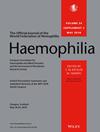Pathogenic Mechanisms in Congenital Afibrinogenemia: A Systematic Review of Genetic Variants
Abstract
Introduction
Congenital afibrinogenemia is a rare bleeding disorder characterized by the complete absence of plasma fibrinogen, primarily caused by homozygous or compound heterozygous mutations in the FGA, FGB and FGG genes.
Aim
To deepen our understanding of the pathogenic mechanisms of afibrinogenemia through the study of natural variants.
Methods
We conducted a literature review of all publications up to 2024 that report cases of afibrinogenemia with confirmed genetic diagnoses, focusing on the impact of mutations on fibrinogen synthesis, assembly and secretion.
Results
We classified the pathogenic mechanisms of afibrinogenemia into the following seven categories: (1) Chromosomal structural variations, such as large deletions, disrupt the integrity of the fibrinogen gene cluster. (2) Splice site mutations interfere with the proper splicing of precursor mRNA, resulting in abnormal transcripts that cannot encode functional fibrinogen chains. (3) Start codon mutations prevent the initiation of translation, halting the synthesis of fibrinogen polypeptides. (4) Nonsense and frameshift mutations introduce termination codons, resulting in truncated fibrinogen chains. (5) Signal peptide mutations disrupt the targeting of polypeptides to the endoplasmic reticulum, preventing further post-translational modifications. (6) Mutations affecting disulphide bonds in the coiled-coil region hinder the assembly of fibrinogen chains, preventing the formation of complete hexamers. (7) Mutations affecting the correct conformation of β and γ nodules cause intra-cellular retention of fibrinogen and prevent its secretion.
Conclusions
This review provides a comprehensive summary of mutations associated with afibrinogenemia, offering insights that contribute to the phenotypic prediction of novel mutations and providing a framework for understanding the molecular mechanisms of afibrinogenemia.

 求助内容:
求助内容: 应助结果提醒方式:
应助结果提醒方式:


